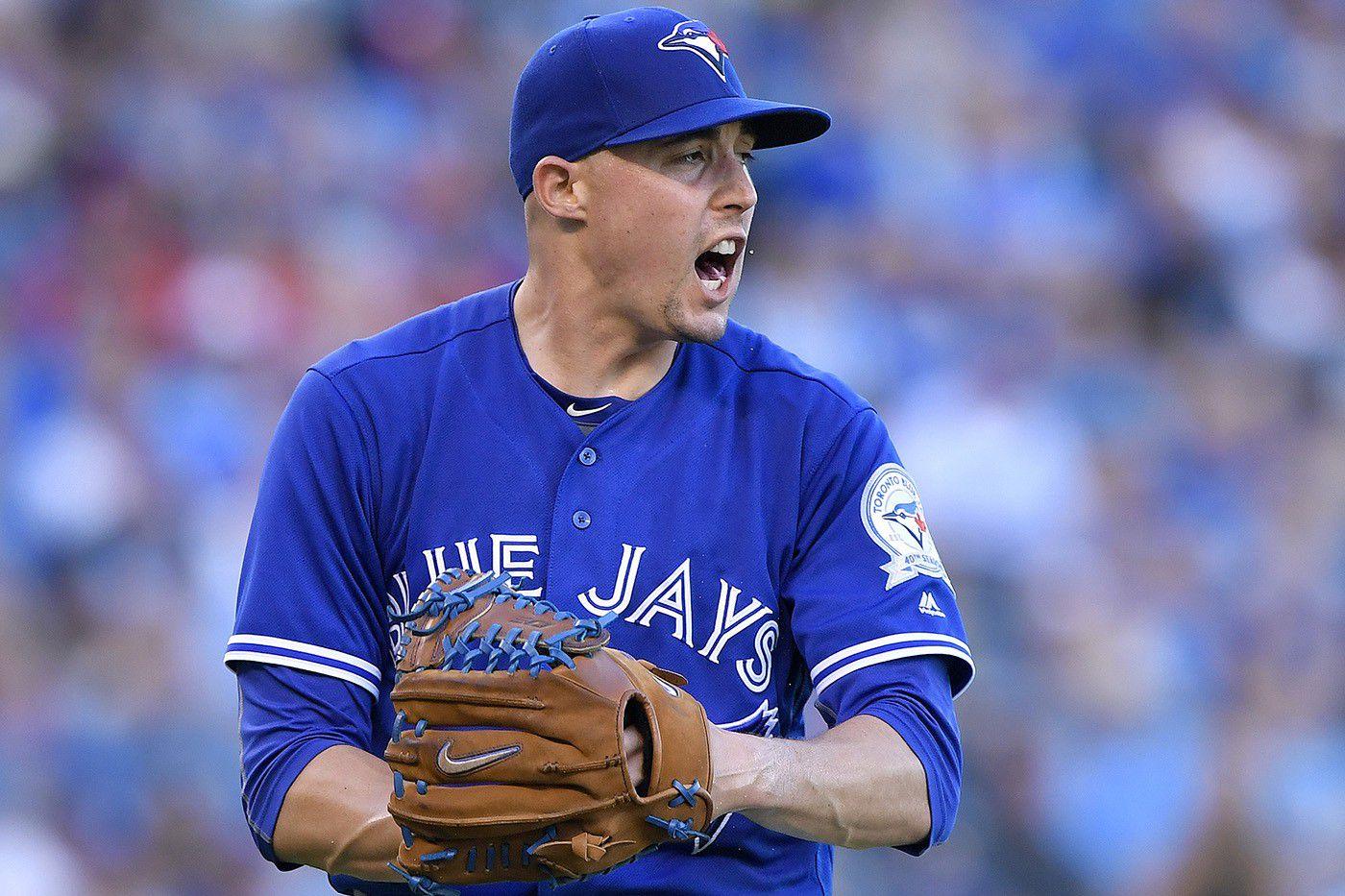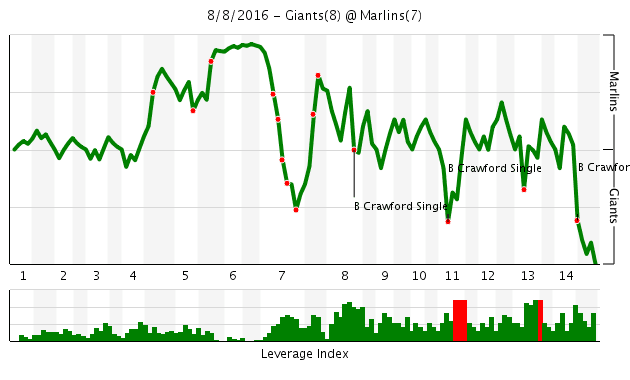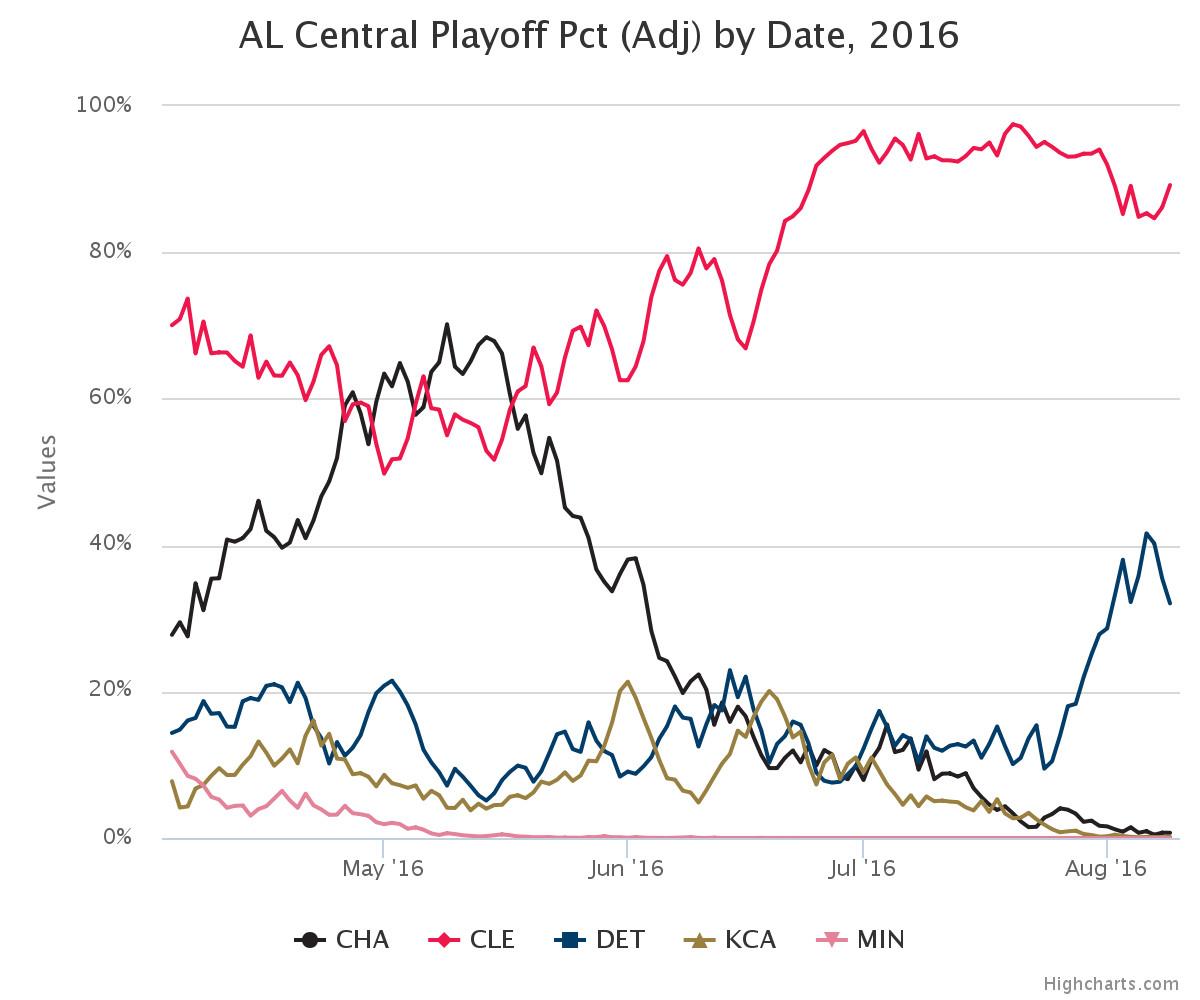Welcome to The Lineup! This is a weekly column that will examine — you guessed it — nine topics from the world of baseball in numbered order.
1 Baseball is going back to the Olympics.
Two days before the opening ceremony in Rio, the IOC announced that baseball and softball, both of which had been removed from the Olympic program after the 2008 Olympics, would return to the program for the Tokyo games in 2020. There will now be three major quadrennial international tournaments: the Olympics, the MLB-sponsored World Baseball Classic, and the Premier 12, which is sponsored by the WBSC, the international governing body of baseball and softball. Three out of the next four years there will be international baseball, and that’s a good thing not only for countries with developing baseball cultures, but for domestic fans who just want to watch more of the game.
Since the Olympics overlap with the MLB schedule, we won’t see Mike Trout in Tokyo in 2020, but even the minor leaguers the U.S. sent from 2000 to 2008 turned in memorable performances, most notably Ben Sheets’s complete-game shutout of Cuba to win gold in Sydney.
We still haven’t quite figured out how to make international baseball work on the level of international hockey or basketball — let alone soccer — but it’s going to be a lot of fun to have it back on the Olympic stage.
2 Prince Fielder hangs ’em up.
It looks like the neck surgery that ended Prince Fielder’s season will also end his career. Fielder still has $96 million left on his contract after this year, so the nature of his retirement is a bit more complex, but with the official “medically disabled” designation, his career is done.
After a brief renaissance last year, Fielder hit an anemic .212/.292/.334 in 2016, which makes sense when you consider it’s probably hard to play baseball with a herniated disk in your neck. I only hope Fielder’s injury doesn’t interfere with his quality of life going forward. His sons are (or were) fixtures in the Texas clubhouse, serving as a now-eerie reminder of the fact that Fielder, like any ballplayer, has a life outside of work to consider. Fielder will always be much more than his accomplishments on the field.
But let’s talk about those accomplishments, because I suspect that they’re going to wind up being underrated in the long run. As much as his appearance in ESPN the Magazine’s “Body Issue” was celebrated as a victory for athletes with bodies more like Fielder’s than, say, Rob Gronkowski’s, a large part of his place in the public consciousness involves people laughing at a fat guy on the run.
Fielder came up as a National League first baseman in a time when the National League was loaded with star first basemen. As he helped drag the small-market Milwaukee Brewers to an extended run of contention, Fielder had to fight with Ryan Howard, Joey Votto, Adrián González, and Lance Berkman for spots on the All-Star team. And that’s without mentioning Albert Pujols, who was operating on a completely different level from his human competitors. Still, over the first eight full seasons of his career, Fielder averaged 35 home runs a year. He wasn’t an empty power hitter, either, as he averaged more than 90 walks and 13 HBPs a year in that span. You could accuse Fielder of being a hitter and nothing else, but when someone hits .286/.390/.528, as Fielder did over those eight years, he doesn’t need to do much else to be a star. And in a sporting culture that values showing up to work every day, Fielder did that too: In his eight-year prime, he missed only 13 games total, and he played all 162 games four times. That run of durability only makes his sudden deterioration and retirement at age 32 all the more shocking.
For me, the definitive Prince Fielder image isn’t the belly flops on the basepaths; it’s the bat speed.
I mean, sweet Jesus he could hit the shit out of the ball.
When he was young, Fielder could turn on a ball more quickly than just about anyone else in the game. Where Howard’s swing is long and graceful, Fielder’s was sudden and violent. He’d eye up a pitch he liked and then just heave at it, like he was tossing 60-pound bags of concrete mix into a wheelbarrow. The sheer force of the act would knock him back on his heels as he watched the ball head toward the second deck in right field, and sometimes he’d have to jerk his bat back out in front of him to catch his balance. There was nothing in baseball quite like that swing, and I’ll miss it.
3 Tim Lincecum might be done, too.
About 10 minutes after the Prince Fielder news broke Tuesday afternoon, it came out that Angels right-hander Tim Lincecum — which sounds weird enough on its own — is going down to Triple-A. Not a good lunch break for guys who became superstars in the late 2000s despite not having the right body for baseball.
This was always a flier for Los Angeles of Anaheim; I’m not sure anyone thought that Lincecum, who’s five years removed from his last good big league season and down several miles per hour on his fastball, would be very good with the Angels. But in 38.1 innings, Lincecum has been a walking illustration of the dangers of saying “Come on, how bad can it be?”
Lincecum posted a 9.16 ERA and allowed 11 home runs and 23 walks against only 32 strikeouts with the Angels, making him probably the worst pitcher in baseball this year. Among the 360 pitchers who have thrown 30 innings in the majors this season, Lincecum allowed the second-highest ERA, the fifth-highest HR/9, the 11th-highest BB/9, and the highest opponent OPS+ (a hilarious 210, or Rogers Hornsby’s OPS+ in 1925).
Although Lincecum’s injuries haven’t literally forced him from the game the way Fielder’s have, his performance in 2016 has pretty much erased the hope that he still has something left in the tank. He’ll keep trying, but I imagine Lincecum’s thrown his last pitch in the major leagues.
4 Keeping Aaron Sanchez in the rotation is the right move.
It’s such a beautifully simple expression of the uncertainty and panic surrounding arm injuries in baseball that the Blue Jays would even consider taking their best pitcher out of the rotation in the thick of a pennant race. But for the time being, Aaron Sanchez will remain in the Toronto rotation.
I understand and even applaud the impulse behind having the discussion. Tommy John surgery is almost routine for young pitchers, and overuse and fatigue are major contributors to injury. Sanchez, who leads the American League in ERA, is only 24 years old, and he won’t hit free agency until after the 2020 season at the earliest. That gives Toronto a strong incentive to keep him intact for purely selfish reasons — the Jays simply want Sanchez to be healthy and effective for the next four years. Meanwhile, Sanchez himself, who’s making only $517,800 this year and won’t really cash in until he either signs an extension or hits free agency, has an even stronger interest in not getting his UCL replaced and missing 12 to 18 months.

If the Blue Jays make it to the World Series, Sanchez — who’s already set a career high for innings pitched this year — would be in line for an enormous leap in workload. For instance, Johnny Cueto threw 212 innings in the regular season last year, then 25 more in the playoffs for Kansas City. If Sanchez did that, it would eclipse his career high by more than 100 innings. Tom Verducci of Sports Illustrated writes a column every year listing young pitchers who are at higher risk of injury thanks to a steep increase in workload, and if Sanchez keeps going at his current pace, he’ll certainly be on that list next spring. The Blue Jays would be well served to protect him.
The problem with doing that comes in three parts. First, and most crudely, winning matters more. As someone who’s railed against pitcher overuse at the college level for years, I don’t say this lightly, but if you’re not going to use Sanchez now, what the hell are you saving him for? This is not only the big leagues; this is crunch time. Locked in a three-way race for the AL East, now is not the time to start worrying about the future — win now and the future will take care of itself. I’m not saying the Blue Jays should treat Sanchez the way the Red Sox treated Ellis Kinder down the stretch in 1949, but if he feels good, he ought to take his turn in the rotation.
Second, the Verducci Effect is total bullshit, a plausible-sounding theory read as fact thanks to some sloppy social science and the imprimatur of one of the biggest names in baseball media. Part of the reason the arm injury crisis is so scary is that we just don’t know enough about what causes those injuries to prevent them with any sustainable level of success. It’s not just about volume or velocity; it’s about mechanics, fatigue, pitch type, and stress. Sanchez could throw 240 innings this year and never feel a thing, or his elbow could blow out in his next outing. That uncertainty suggests a wait-and-see approach, rather than taking drastic action that hurts the team now and is based on data that’s sketchy at best.
Third, putting him in the bullpen now wouldn’t make that big of a difference. If it were just a matter of warming up once per outing and pitching one inning every other day, or two clean innings every three or four days, that’d be one thing. But relief pitchers warm up and then sit down all the time, throw on back-to-back days, and pitch more stressful, higher-leverage situations. It’s not safe in the bullpen either.
Which is not to say that teams shouldn’t protect their young pitchers. They just need to be smarter about it. If the Blue Jays wanted to limit Sanchez’s innings (or the Mets with Matt Harvey last year or the Nationals with Stephen Strasburg back in 2012), they could’ve done so while still saving him for the playoffs. Toronto was the best team in baseball down the stretch last year, and it lost David Price to free agency, so it’s not like the Blue Jays couldn’t have expected to be involved in another pennant race this year or to have Sanchez take on an even bigger role. So instead of pulling him from the rotation or breaking up his routine by moving him to the bullpen, why not skip a start here and there in May or June instead of waiting until August or September? Or better yet, why not try to steal a few innings here and there? Sanchez’s longest start of the year was 106 pitches, and he hasn’t thrown 100 pitches in a game since June 29, but the Blue Jays could have truncated a few seven-inning starts to five innings or fewer if they really wanted to keep his workload down.
Going to a six-man rotation down the stretch should help keep Sanchez fresh, as will the expanded bullpen come September 1, but for all intents and purposes, Toronto is just letting it ride. It’s the smart decision from this point forward, but it’s a decision the Blue Jays forced themselves to make.
5 The WPA Graph of the Week goes to the Giants and Marlins.
In order to go 14 innings in the first place, a baseball game has to remain close in high-leverage situations for a long time. This game is notable because each team got to 75 percent win expectancy three times, the last of which happened when Brandon Crawford drove in the game-winning run in the top of the 14th.

Crawford not only won the game, he had one of the best games in MLB history. The San Francisco shortstop went 7-for-8 with a double and a triple; only four other players since 1913 (the first year in which Baseball-Reference’s Play Index has data) have recorded seven hits in a game. And more importantly, Crawford had a huge night from a win probability perspective; the four biggest swings in win probability were Crawford hits, and his total WPA, 1.438, is the third-highest single-game WPA in baseball history for a position player.
6 Bruce Bochy’s got a lot of bench flexibility with his pitching staff.
You’ll also notice that Madison Bumgarner pinch hit in the game against Miami. Bumgarner’s gotten a lot of press for his hitting this year, since he’s a big ol’ dude who hits a lot of dingers. In fact, even though Bumgarner just turned 27 (how is he only 27?), his 13 career home runs are tops among active pitchers.
Bumgarner has pinch hit twice this year, which isn’t even a career high, let alone a threat to Micah Owings’s post-strike record of 18 pinch-hit appearances for a pitcher in 2008. And the first time Bumgarner pinch hit, back on July 31, he doubled, and Jeff Samardzija, a fellow pitcher who used to be a wide receiver at Notre Dame, pinch ran for Bumgarner and scored a run.
While Bumgarner’s a huge power threat for a pitcher, he’s still hitting only .180/.271/.328 with a 41.4 percent strikeout rate this year and .182/.229/.304 with a 34.4 percent strikeout rate for his career. Even so, in an age when 12-man pitching staffs are the norm, Bumgarner and Samardzija could help manager Bruce Bochy stretch his bench in extra-inning games, either before roster expansion or during the playoffs.
7 The Red Sox canceled David Ortiz bobblehead night.
Bobbleheads never quite look like the players they’re supposed to resemble. I’ve got a Plácido Polanco bobblehead whose only similarity to Polanco himself is that its head is disproportionately large. So when the Red Sox pulled the plug on the David Ortiz bobblehead because the dolls were inaccurate, you knew it had to be good.
Turns out the problem isn’t that the dolls don’t look like Ortiz as much as they do look like David Letterman in Al Jolson makeup. Good for the Red Sox for playing it safe and not distributing a souvenir that looks like a racist caricature.
The concept the Red Sox attempted, however, is extremely cool. For as many iconic moments as Ortiz has had in a Red Sox uniform, his speech after the bombings at the Boston Marathon in 2013 transcended the game. I’m sure it’ll be an all-time great bobblehead once they fix the face.
8 There’s no way Joc Pederson actually sleeps like that.
The Dodgers beat the Red Sox 3–0 on Saturday afternoon, and after the game Dodgers center fielder Joc Pederson went home and took a nap on the sofa. Or he tried to.
The dog in that photograph is Rocco, who is Warriors shooting guard Klay Thompson’s bulldog. I imagine Rocco came to be on top of a sleeping Pederson because Klay left the dog with his brother, Dodgers outfielder Trayce Thompson, while he’s in Brazil for the Olympics. The younger Thompson is one of Pederson’s roommates, and I guess once a dog’s in a house it’s going to sleep wherever it wants.
Here is the first problem: That dog looks heavy as shit. Adorable as he may be, that’s a big, heavy, warm object lying on Pederson’s chest while he’s trying to sleep.
Of course, it’s extremely unlikely that Pederson was actually sleeping, as his new teammate Josh Reddick so astutely pointed out.
Well, unless you want to imagine a world in which people just walk around taking pictures of Joc Pederson while he sleeps. That’d be interesting, too.
9 The Tigers are lying in wait.
The Indians are supposed to be the best team in the American League. They were up 7.5 games in the division on July 20, but since then, the Tigers went from 2.2 percent to win the division to 15.6 percent (per Baseball Prospectus). Or in cruder terms, the Tigers are 3.5 games back with seven games left to play between the two teams.

Between Cleveland’s pitching, Kansas City’s defense of its World Series title, and high-profile disasters in Chicago and Minnesota, the Tigers have flown under the radar to some extent. But despite injuries to Nick Castellanos, Cameron Maybin, and Jordan Zimmermann, they’re right in the thick of things with eight weeks to play.
Meanwhile, I still think the Indians are the best team in the American League, but they’re far from invincible. Danny Salazar’s elbow discomfort is a concern, as is Cleveland’s inability to find a solution at catcher. It’d be a real shot to the kidneys for the Indians to trade so much for a playoff stopper in Andrew Miller, then crash out before the divisional round, but it’s still very much a possibility.